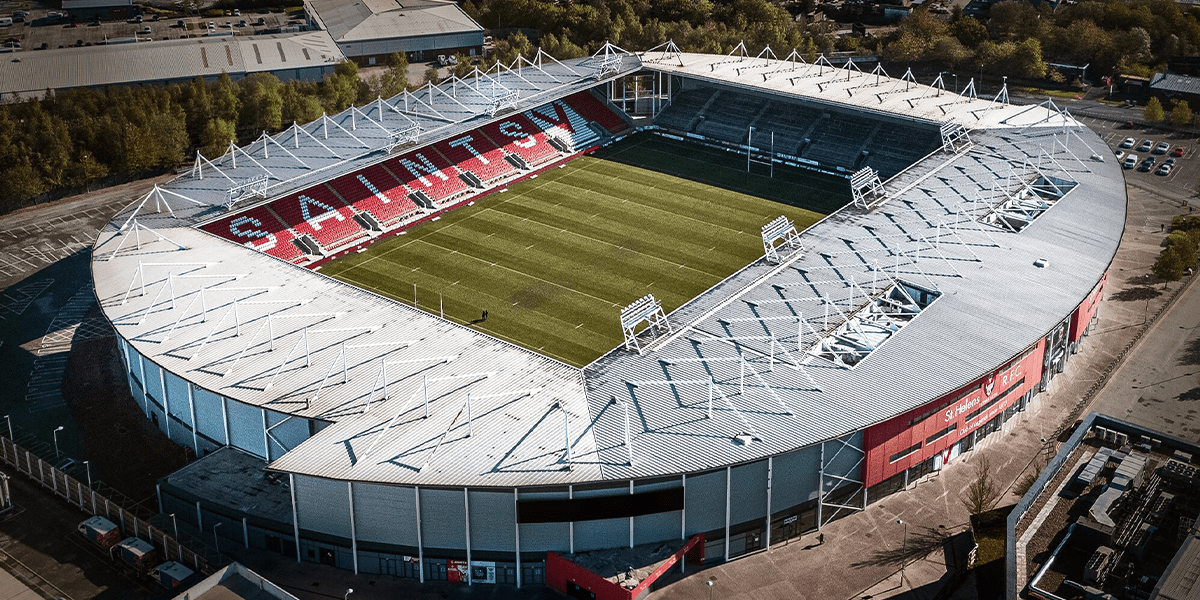With its location between Liverpool and Manchester, St Helens is one of the North West’s best kept secrets.
Renowned for its industrial heritage, sporting excellence, great shopping, and with lots going on, St Helens is a magnet for those in the know!
So if you’ve wondered where is St Helens?, how big is St Helens?, and what are people from St Helens called?, then this guide to all things St Helens will tell you more.
Is St Helens in Lancashire or Merseyside?
The area that became St Helens had a long history as part of the historic county of Lancashire.
It became part of the new county of Merseyside in 1974 following local government reorganisation.
Despite this, many St Helens residents still identify with its Lancashire roots and celebrate the county day on November 27.
Today, the town has strong links with Merseyside, the historic county, and the wider North West region.
How many people live in St Helens?
Around 183,000 people live in St Helens, and the town is still growing.
Combining urban living with a rural hinterland and strong community ties, it’s a great place to live.
With excellent transport links to Liverpool and Manchester, it’s handily placed for commuting across the region.
Is St Helens a city?
We’re sometimes asked; which city is St Helens in, Liverpool or Manchester? In fact, it’s in neither!
Today, St Helens is a large, thriving and growing town, but it’s not yet been granted city status of its own.
The birthplace of the modern glass industry
St Helens is the birthplace of the modern glassmaking industry.
Pilkington, a globally recognised glass manufacturer, was founded here in 1826 and introduced the float glass process that revolutionised modern construction.
You can find out more about this fascinating history at The World of Glass Museum.
There, you can explore The Tank House, where William Windle Pilkington perfected the regenerative process and continuous glass making.
Home to a legendary rugby league club
St Helens is known around the world as home to one of the game’s biggest, and most successful clubs.
Since its foundation in 1873, the club has amassed an incredible 69 trophies and has established itself as the most successful in the modern game era.
Today, the club’s home at Totally Wicked Stadium provides world class facilities for sport and events in the town.
The Dream sculpture: A symbol of hope
St Helens grew out of the glass and coal mining industry, and this proud industrial heritage is remembered in the Dream sculpture.
This 20-metre tall artwork by Jaume Plensa is located on the former Sutton Manor Colliery site, connecting the past and the present, as St Helens looks to the future.
The first steam powered passenger railway
The legendary Rainhill Trials of 1829, held near St Helens, led to the development of the first ever steam-powered passenger railway.
The trail was won by George Stephenson’s legendary ‘Rocket’, setting off a global transport revolution that would change the world.
One of England’s oldest canals
The St Helens Canal, also known as the Sankey Canal, was opened in 1757 and is one of England’s oldest canals.
It played a vital role in transporting coal, goods, and materials during the town’s industrial peak.
Things to do and places to visit
There’s so much to do in and around St Helens!
The North West Museum of Road Transport is in the heart of the town, just a couple of minutes’ walk from St Helens Central railway station and the bus station.
It showcases an impressive collection of vintage vehicles.
The nearby Knowsley Safari Park is perfect for wildlife lovers who want to see lions, rhinos, and other exotic animals up close.
For a relaxed retreat, Carr Mill Dam is an idyllic setting for watersports, fishing, or a peaceful stroll.
If you’re in town during the season, the Totally Wicked Stadium is an essential visit, giving you the chance to enjoy top flight rugby league in world class surroundings.
How to get to St Helens
St Helens is well-connected by road, rail, and public transport.
By car, the town is easily accessible via the M62, M6, and A580 (East Lancashire Road), making it convenient for anyone travelling from Liverpool, Manchester, and beyond.
St Helens Central and St Helens Junction railway stations provide direct train services to major cities, including Liverpool and Manchester.
The town is also well-served by bus routes linking it to nearby areas.
For international visitors, Liverpool John Lennon Airport and Manchester Airport are both nearby.
Host your next event at Totally Wicked Stadium!
Looking for the perfect venue for your next event?
Totally Wicked Stadium, home to St Helens R.F.C., offers state-of-the-art facilities, excellent catering options, and flexible spaces.
Whether it’s a corporate meeting, a private gathering, or a large-scale event, our experienced team can ensure your event is a success.

